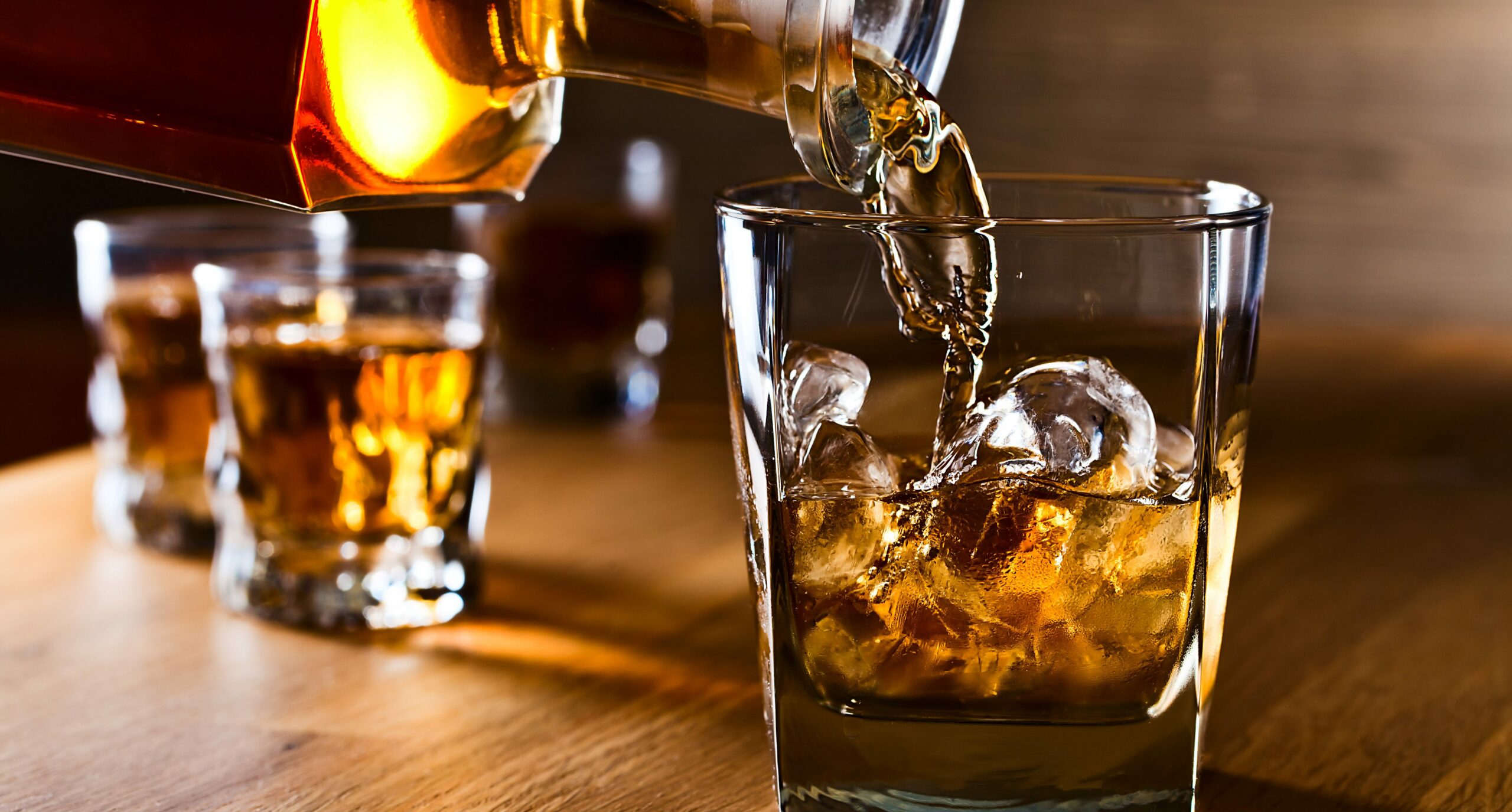Should I add water or ice to my whisky? – possibly the question that we get asked the most by those beginning their whisky journey. Adding water or ice can change whisky in both a positive and negative way. The most important thing to remember is that there is no right or wrong answer, despite what you may have read or seen. Ultimately, what you add to your whisky is down to you and your personal taste.

The reality is that most whisky already has some water added. Many people do not realise this. The process is called ‘cutting’ and is done before bottling. This is to bring the alcohol percentage down from the high ABV strength in the cask (often between 50-60% ABV) to a more acceptable, drinkable level for most consumers. This is often between 40-46% ABV. It cannot be legally less than 40%. The water used is usually local spring water.
Drinking your whisky neat
Even now, you will see or read people saying that you should never add water. We have heard this from some connoisseurs as then you are tasting the whisky in its natural form with all the original distillery characteristics and flavours. That is their own personal prerogative, choice and opinion.
However, it is worth noting that everyone that either produces whisky or creates the products we drink. The distillers, analysts and Master Blenders always add water when analysing the new make spirit off the still or whiskies to be used in a blend or single malt batch. This helps them to maximise the aromas and flavours to give a full analysis. They will often add different amounts to see how the spirit or whisky performs.
They bottle at the strength that ‘respresents the whisky best.
Adding water
By adding water to a whisky, it can open different, new and subtle aromas and flavours that could previously not be experienced. This is particularly true when drinking cask strength whiskies with higher alcohol levels (this can be up to and over 60% ABV in some cases). With cask strength whisky the alcohol and resulting burning in your mouth can overpower even
the most prominent flavours.
Adding water dilutes this alcohol and reduces its influence, giving both the prominent and more subtle flavours a chance to shine. Imagine drinking orange squash concentrate without any water and then with water… it is the same principal. How much water you add is entirely up to your taste – a few drops, a dribble, a dash … it is your choice, and to your taste. Some will add none, some a little and some a lot.
What type of water to add
Water is water, right? Well, no – the type of water you add to your whisky can also make a difference. Firstly, it should always be still water. Carbonated or sparkling water will affect the flavour and structure of the whisky when you add it. This is good for a nice refreshing highball-style cocktail, but not general tasting or analysing.
Tap water is treated with chemicals, especially chlorine and fluorine, and these can alter the flavour. Do you live in a hard or soft water area? It will change how your whisky reacts and tastes. Spring water is similar as it has often permeated through rock over hundreds of years, picking up salts and minerals along the way. It is best to find the most neutral water you can – this will dilute but not add any flavour to your whisky. These are just tips but ultimately, do not get too stressed about it – we often just use filtered tap water, and it works perfectly fine.
Adding ice
However, adding ice is slightly different. Rather than enhancing aromas and flavours as water can, it inhibits them. Ice makes the temperature of the whisky drop rapidly. This locks down the aroma and flavour compounds. It is like drinking a white or rosé wine that has been chilled down too much. It will be refreshing to drink but taste a little dull and flat. It will only start to open and reveal its full characteristics once it starts to warm up towards room temperature.
Different whiskies deserve different treatment
Despite the myths about adding or not adding water or ice, don’t feel ashamed to drink a cheap American bourbon or Scottish blended whisky with a mixer as they are often produced for this treatment. If you plan to drink an expensive single malt avoid adding any other flavours, as you are buying this whisky for its unique flavour. If you can, try a sip before adding ice or water as we have mentioned. You will often be surprised at the difference in the flavours and you will learn more about the whisky that you are drinking.
It is really up to you
The important thing about this is not to get too hung up on it. Experiment with different whiskies and different levels of water to find your perfect amount and combination. Everyone will be different. By doing this you will find your own way of drinking whisky and get the most of it. Keep it fun.
Did You Know?
Ensure that you use still water not carbonated. Also the water or ice you add should come from a mineral source or be distilled. Tap water in most locations world wide contain high levels of chlorine and this will partially mask the flavours of the whisky.







